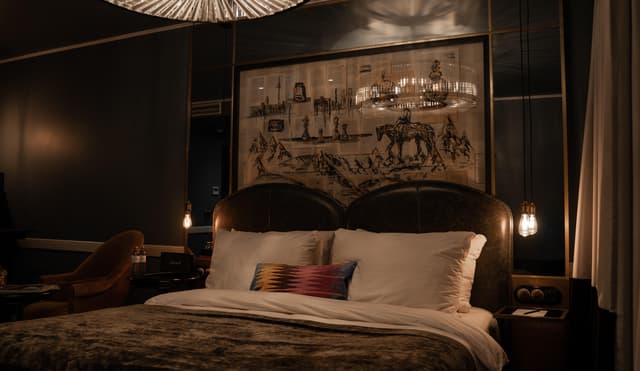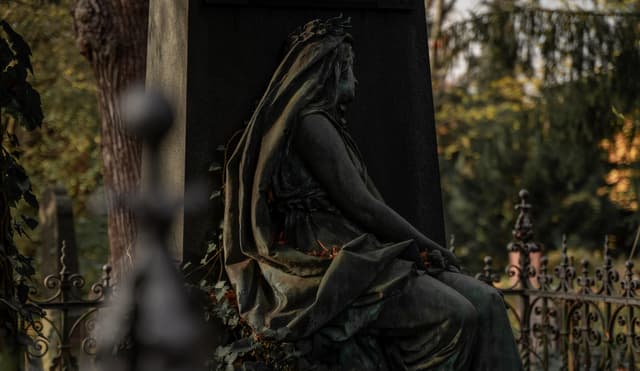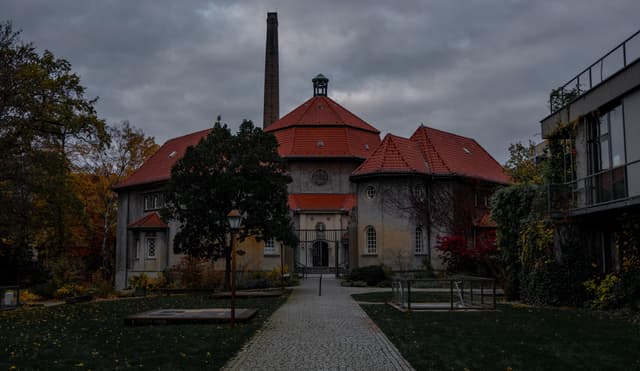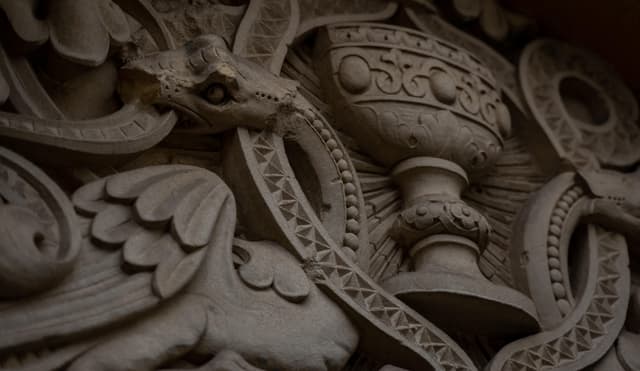The Alternative Guide to Berlin Map
Save for Later
Share
The Alternative Guide to Berlin Map
The Alternative Guide
Welcome to The Alternative Guide to Berlin Map featuring the 20 best off-beat and unusual things to do. My tailored interactive map is perfect for when you are out on your travels, including my full city guide, photographs and location details all in one place.
Click to discover Berlin through an alternative lens as we step off the beaten track and unearth hidden gems and curiosities that are often left undiscovered unless you know a local.
Featuring 20 unexpected, quirky and one-of-a-kind locations, I guarantee the guide will make for a memorable yet extraordinary experience to complete your visit to Germany's capital city.
In my interactive map I reveal my black book of favourite places to visit including detailed accounts of each location, historic tales and of course my top travel tips.
This guide was made to inspire you to wander from the usual tourist path, whilst providing a comprehensive guide to inspire fellow off-beat adventurers who intend to visit Berlin.
Please feel free to get in touch if you have any questions. Thanks, Vicky
@thealternativeguide_
Updated ago
16
Share
Hotel recommendation

Sir Savigny Hotel
@thealternativeguide
Sir Savigny is a quintessentially stylish boutique hotel situated within a classic 19th century private residence in the heart of Berlin’s literary quarter. Its aristocratic design pays homage to its literary roots with rooms featuring dark-hued velvet reading chairs, vintage furniture, art deco chandeliers and antique style bureaus, containing a selection of great titles, making for the perfect cosy escape. It is said that the uniquely named hotel’s theming is based on a fictional ‘bon vivant’ type character, Sir Savigny, who is renowned for his refined taste and enjoyment in good living!
The hotel contains just 44 guest rooms, with each being lovingly designed in an eclectic style, which brings both contemporary and classical decadence together to meet perfectly in the middle. Their rooms range from a small double up to a junior suite (which even has its own freestanding bathtub in the bedroom!). For my solo stay I opted for the deluxe double and was really impressed with the layout and how spacious the room was. I also loved the inky illustrative artwork by local artist ‘Katharina Musick’ who uses vintage book pages as her canvas. Each piece acts as the framing above the extremely luxurious 300-count linen bed with its plush velvet throw and cushions. You will also find an iconic Marshall speaker, cocktail making kit, cute teacups and a well-curated mini bar should you fancy a drink! Plus, if you get hungry you can even use the vintage-style intercom to buzz straight through to ‘The Butcher’ which is the in-house restaurant downstairs.
Situated in the artsy neighbourhood of Charlottenburg and located just moments away from the famed Savignyplatz, Sir Savigny makes for a perfect sophisticated base for a short city break.
If you are thinking of booking a stay please consider supporting the guide and using my affiliate link.
Add to
Details
Things to do

Marienkirche
@thealternativeguide
Dating back to the Middle Ages, Marienkirche (also known as Saint Mary’s Church) is one of the oldest and most impressive churches in Berlin!
A building with a long and fascinating history which includes several fires that instigated extensive refurbishments, it features a spectacular combination of gothic, baroque and neo-gothic architecture. In 1789 the church went through a Neo-Gothic overhaul, led by the famous architect ‘Carl Gotthard Langhans’ who is also renowned for his design of the Brandenburg Gate.
The church originated in the 13th century and was built from red bricks in the ‘Brick Gothic’ style and has been an icon of Berlin’s cityscape located in Alexanderplatz for hundreds of years.
The interior of the church holds a multitude of macabre artworks, providing some of the finest examples of ‘memento mori’ I found whilst visiting the city. You can view a whole host of skull carvings, winged hourglasses and painted skeletons amongst the spectacular memorials and artworks, which line both sides of the long central hall. It is interesting to note that many of these monuments have been saved from nearby churches, which were destroyed during the second world war and brought here for safe keeping.
As well as these tremendous examples of thought-provoking iconography, you will find the fascinating fresco painting entitled ‘Der Totentanz’ (The Dance of Death) which is more than 22 metres in length by two meters in height. The piece dates back to the 1480’s but was only rediscovered in the 19th century during renovations on the church.
Sources believe the piece was created in 1484, during the period of the plague epidemic, great famines and many wars, which resulted in the idea of death being an everyday occurrence. The design depicts people from all walks of life being led by the dead, in the form of a dancing corpse, to their death. Its purpose was to act as a reminder of one’s mortality and to encourage people to lead a religious life, whist reminding onlookers that we are all equal before the eyes of death.
You can enjoy visiting Marienkirche free of charge but please bear in mind that this is an operational church, which still holds religious ceremonies, so I’d advise checking their schedule online before visiting.
Add to
Details

Bergmannstrasse Cemeteries
@thealternativeguide
In the neighbourhood of Kreuzberg, along the leafy street of Bergmannstrasse, you will find four interlinking parish cemeteries, which are some of the oldest and most historic burial grounds in Belin. You are able to wander through the Luisenstadt, Trinity II, Friedrichswerderscher and Jerusalem & New Church Cemeteries, by stepping through breaks in the old, dilapidated perimeter walls. In fact, it’s quite easy to forget which cemetery you are in as they all tend to merge together to create a vast 21-hectare site, which I found extremely fascinating to explore.
Within these cemeteries you are able to see beautiful examples of ivy draped family tombs, art nouveau memorials, exquisite religious carvings and magnificent mausoleums. It’s a truly unique experience to wander through the various tree lined passageways and discover the historic graves which reside here.
Trinity Cemetery II (Dreifaltigkeitskirchhof II)
The Trinity Cemetery is the oldest of the four sites, originating in 1825 and it is the first one you enter from Bergmannstrasse. Here you will discover the graves of many great architects, writers and artists including Martin Gropius who was the famed architect of the former Decorative Arts Museum and the great uncle of the Bauhaus founder Walter Gropius. You can also find the grave of the painter Adolph Menzel who is thought to be one of the most influential German realist painters of the 19th century.
Luisenstadt Cemetery
Originating in 1831, the Luisenstadt is the largest cemetery, spanning almost half of the total area. Here you can see the chapel, which was built in 1908, the old bell tower and the resurrection angel carving in a central round leading down to the impressive mausoleum of the Löblich family. You can also find the final resting places of Gustav Stresemann, a renowned Berliner who is celebrated for winning a Nobel Peace Prize and for being the Reich Chancellor and Foreign Minister of the Weimar Republic in the 1920’s.
Friedrichswerderscher Cemetery
Inaugurated in 1844, this site covers an area of 30,800 square meters and is in sandwiched between Trinity Cemetery II and Jerusalem & New Church. It’s home to a number of fascinating art-nouveau graves and monumental mausoleums.
Jerusalem and New Church Cemetery
This is the smallest of the four cemeteries and was also the last to be created in 1852. In my opinion some of the most impressive mid-century architecture can be found in this section of the wider complex including the monument of Max Krause designed by Bruno Schmitz and Franz Metzner, which is sighted by many as one of the most beautiful Art Nouveau graves in Berlin.
The whole site is magnificent to explore and holds a peaceful silence as you walk up and down its crooked paths. In addition to the artistic monuments, you will also find a diverse range of fauna and flora with many birds, insects and wildlife calling these cemeteries home.
Add to
Details

Silent Green Kulturquartier
@thealternativeguide
New life has been breathed into what was Berlin’s first crematorium by the cultural organisation known as Silent Green. Taking over the site around 10 years after it closed in 2002, the Silent Green team has reinvented the space transforming it into a cultural quarter for concerts, art exhibitions, events and learning.
The historic 17m high domed red roofed structure dates back to 1911 and is located in the middle of the area’s first cemetery known as Urnenfriedhof Gerichtstraße. The imposing octagonal ceremonial hall with adjoining wings and courtyard is the focal point as you enter through the black iron gates decorated with mouldings of the flames of a fire.
Atmospheric concerts and shows are now held within the vaulted cellar, in which the deceased and their mourners could once be found. In Berlin there is a known tradition of repurposing disused buildings and this is definitively the perfect example of this practise.
As well as admiring the crematorium’s unique architecture, you will also find the MARS café located towards the back of the grounds. It’s a one-of-a-kind-café and a fantastic place for breakfast, lunch or dinner due to its unusual setting and use of fresh regional ingredients (even their vegetables and herbs are grown on their rooftop garden). The menu consists of a vast array of organic healthy dishes which are complimented by a bursting cake and pastry cabinet, all of which pair exceptionally well with one of their delightful coffees or loose-leaf teas. If you are visiting during the warmer months you can opt to sit outside or you can drop by ‘Little Mars’, located on the way into the crematorium in the former gatehouse, which is their coffee house offering snacks and light bites.
The macabre site has now been transformed into an expectational location which offers peace and tranquillity along with a unique and extraordinary atmosphere which can’t be beaten.
Add to
Details

Kaiser Wilhelm Memorial Church
@thealternativeguide
The Kaiser Wilhelm Memorial church can be found in West Berlin and for all who visit it acts as stark reminder of the futility of war and the subsequent destruction it brings. The original church was built in the 1890s by order of Emperor Wilhelm II who wanted to erect a religious memorial in honour of his grandfather. The church was constructed in the neo-romantic style and designed by architect Franz Schwechten. It originally featured five spires and the highest tower in the city, whilst it also contained the second largest peal of church bells in Germany.
During World War II in November 1943, the church suffered irreparable damage during an allied air raid and all that remained was one of the spires and the entrance hall. After the war the church’s striking ruins became a reminder of the horrors of the war, but also a symbol of the city rising from the ashes. In 1947 there were plans put in place to demolish the church to build a new one, but this led to huge disagreements and public protests, so as a compromise the architect Egon Eiermann built the modern octagonal church building which sits to the side of the ruin. This allowed the old spire to act solely as a striking memorial, which invites visitors inside to explore the church’s original features.
Inside the Hall of Remembrance, you will discover fascinating mosaics and murals that span across the celling and floor, plus artifacts which have been saved from the original church. From the outside you can admire an array of intricate mythical carvings including a unique dragon design tucked away above a side door.
Nicknamed by Berliner’s as ‘the hollow tooth’ the ruins act as a monument for peace between nations, whilst also signifying an extremely important part of Berlin’s history.
Add to
Details

Buy to unlock full guide
Access all the local insights and recommendations from @thealternativeguide when you purchase this guide.
ABOUT THE AUTHOR
The Alternative Guide
Hi there, I'm Vicky founder of The Alternative Guide.
Every time I travel to a new city I make a list of unusual places, quirky stores, speciality coffee shops, dark museums, independent eateries, one-off street art and any other off the beaten track places I can manage to find.
I put www.thealternativeguide.com together to provide an alternative lens on some of the major cities across the world, encourage support for local independents and share my black book of favourite places to visit.
Hopefully this will inspire you to stray from the usual tourist path and at the same time provide a comprehensive guide for fellow off-beat adventurers when travelling to a new city.
Thanks for reading and feel free to reach out to me with any questions.
IG: @thealternativeguide_
What's included
Digital Map
Fully interactive, digital map for finding places nearby
20 places
20 hand-picked places with notes from the creator
DESTINATION(S) COVERED
Berlin, Germany
FOCUSES AND THEMES
Architecture
Art
Boutique
Adventure
History
People & Culture
Photography
Slow Travel
Format
Guide
Guides typically include detailed information and how-to’s about a destination as well as suggested places to try.
COMMON QUESTIONS
What is Thatch?
Thatch is an online marketplace that provides instant access to thousands of vetted local experts and premium travel guides - making it the easiest and most affordable way to take high quality trips with less stress.
For travel creators (tastemakers, travel advisors, influencers and local experts) Thatch makes it easy to curate, publish, and sell digital travel guides, itineraries and personalized planning services.
What if I’m not satisfied with my purchase?
How do I access my purchased guides?
Can I access my guide offline?
How often are guides updated?
Can I request a personalized guide or itinerary?
Can I sell my own travel guides and itineraries?
Save for Later
Share